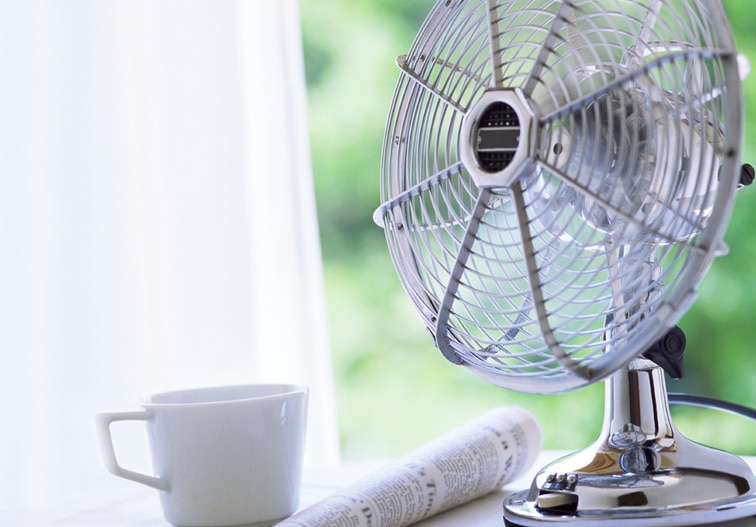
Eco-Friendly Tips to Stay Comfortable During the Dog Days of Summer
We’re in the peak of summer, and many homeowners across New England are asking the same question: how to keep your home cool without air conditioning? While air conditioning is certainly a comfort, not everyone has access to it—or wants to pay the rising energy bills that come with it.
Fortunately, there are several green, energy-saving strategies that can help you beat the heat, reduce utility costs, and stay comfortable all season long. Let’s explore some effective and sustainable cooling methods that use your windows, airflow, and smart ventilation.
🌇 Are Your Windows Facing West? Keep Your Blinds Closed
If your home has west-facing windows, you’ve probably noticed how much heat they let in—especially during late afternoon. Homes located along the coast can feel particularly humid and stifling, almost like a greenhouse.
In this case, simply keeping the blinds or curtains closed on west-facing windows can help reduce indoor temperatures. In fact, according to energy experts, this technique can cut cooling costs by up to 7%. Therefore, this small habit offers a quick win for your comfort and your wallet.
🌬 Rotate Ceiling Fans to Spin Counterclockwise
One of the most effective ways to keep your home cool without air conditioning is using ceiling fans wisely. By setting your ceiling fans to spin counterclockwise, you create a wind-chill effect that makes the room feel cooler—even if the temperature doesn’t drop.
According to Energy Star, this technique can significantly increase comfort. In coastal homes, you may even catch a sea breeze through your windows, enhancing the effect. Moreover, using exhaust fans in kitchens and bathrooms helps pull warm air out of the home and improves air quality.
🪟 Maximize Airflow with Cross Ventilation
Another great strategy is to take advantage of natural airflow through cross ventilation. This energy-saving method involves regulating air movement using a combination of strategically opened windows, doors, and fans.
Here’s how to set it up:
Identify an inlet window (where fresh air enters)
Locate an outlet window (where warm air exits)
Place a fan in front of the inlet window facing into the room
Place a second fan at the outlet window, pointing out
Be sure to leave interior doors open so the air can travel freely throughout the home. As a result, warm air is pushed out while cooler air is drawn in—creating a refreshing breeze even on hot summer days.
🧊 Let Your Windows Work for You
Whether or not your home has air conditioning, your windows can play a major role in keeping indoor temperatures comfortable. However, poorly designed or outdated windows may do the opposite by allowing unwanted air infiltration.
Energy-efficient replacement windows are designed with advanced seals, weather-stripping, and multi-pane barriers that prevent air from sneaking in through:
Sash meeting rails
Sash perimeters
Gaps between the frame and wall
Additionally, newer windows often include features like Low-E glazing, which reflects solar heat away from the home. These windows also carry a Solar Heat Gain Coefficient (SHGC) rating—the lower the number, the better the window is at blocking solar heat.
To further enhance insulation, look for windows filled with argon or krypton gas, which help retain cool air and keep hot outdoor air where it belongs—outside.
🌱 Sustainable Comfort Without the High Energy Bill
Learning how to keep your home cool without air conditioning is not just about comfort—it’s also about energy efficiency. By following these simple steps, you can create a more livable indoor environment while reducing your reliance on expensive cooling systems.
Let’s recap the key tips:
Keep west-facing window blinds closed to block solar gain
Set ceiling fans to spin counterclockwise
Use cross ventilation to move air effectively
Upgrade to energy-efficient windows with proper SHGC ratings
Add Low-E glass, weather stripping, and gas-insulated panes
Ready to Stay Cool Without A/C?
At Coastal Windows & Exteriors, we believe in smart, sustainable home improvements that not only improve comfort—but also reduce energy waste. If you’re ready to make your home more efficient this summer, start with your windows.
📞 Call us today at 978-304-0495
📩 Or email us at svanderbilt@mycoastalwindows.com
🌐 Visit: www.mycoastalwindows.com to learn more and get a FREE estimate
Let’s make your home a place where you can stay cool—without cranking the A/C.

